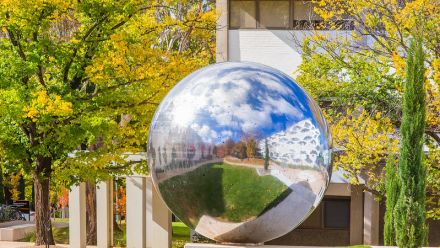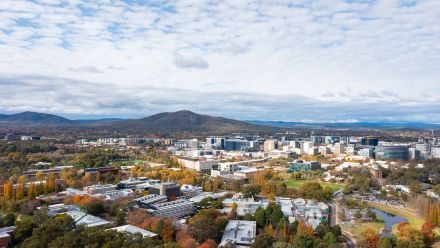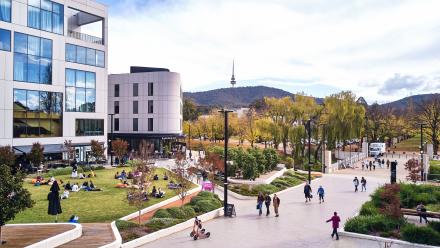Indigenous students share their life-changing ANU experience
Education is such a powerful thing. As an Indigenous student, the opportunities that education can give has meant a lot and will change the path of my career.
Taliah King and Pete Swanton have chosen very different academic pursuits at The Australian National University (ANU). What they have in common is their profound experience as Indigenous students at the national university.
Ms King, from the Yuin and Waanyi people, came to ANU from a regional town to study a Bachelor of Arts specialising in psychology - she is in her final year.
Mr Swanton, a Gamilaraay/Yuwaalaraay man, has been working closely with ANU astronomers Dr Brad Tucker and Vice-Chancellor Professor Brian Schmidt, searching the night-sky for connections between modern scientific discoveries and ancient Aboriginal knowledge.
The pair spoke publicly about their life-changing campus experiences at the launch of the ANU Reconciliation Action Plan (2021 - 2022), known as the RAP, at Kambri today.
"The support I've had from the Tjabal Centre and the University, more broadly, has been amazing," Ms King said.
"Education is such a powerful thing. As an Indigenous student, the opportunities that education can give has meant a lot and will change the path of my career.
"I think the University's Reconciliation Action Plan is about giving Indigenous students and staff and other people at ANU an instrumental voice to make a difference."
Mr Swanton gave part of his speech in his Indigenous language at the RAP launch.
"It was quite emotional for me to be able to share a little bit of my language," he said afterwards.
"That shares something personal about me, who I am and my identity, but it also shares an important part of my experience here at ANU - being able to learn my language, as part of my education here, which was an opportunity that my mum never had."
Mr Swanton said he loves doing cutting-edge astrophysics at ANU, "but there is no connection between black holes and my cultural identity".
"I am in the middle of setting up a project to bring a scientific lens to the oral traditions of my people, and actually looking at how Aboriginal people were able to use what they saw in the night-sky to inform decisions about navigation and to tell them what was happening here on Earth," he said.
"We now know, with our Western understanding of astronomy, that there is a connection between the Moon and the tides. There's a connection between what stars we can see at night and what the seasons are doing on Earth. I want to explore how Aboriginal people were able to make these connections for 60,000 years."


